Meet the Church Builder
In 1849, Bishop Loras of Dubuque returned to his native area in Lyons, France. He traveled to visit his friend – the Cure of Ars, to make a report on the condition of the diocese, and to find new recruits for the pioneer country. One of the five men willing to leave his family, friends and French homeland was this convert to the Faith and subdeacon, Frederic Cyrille Jean. Father Jean would soon be in Lyons, Iowa to raise the structure that stands today. (Journey: The biography of a Pastorate. ME Eckelberg. Page 13)

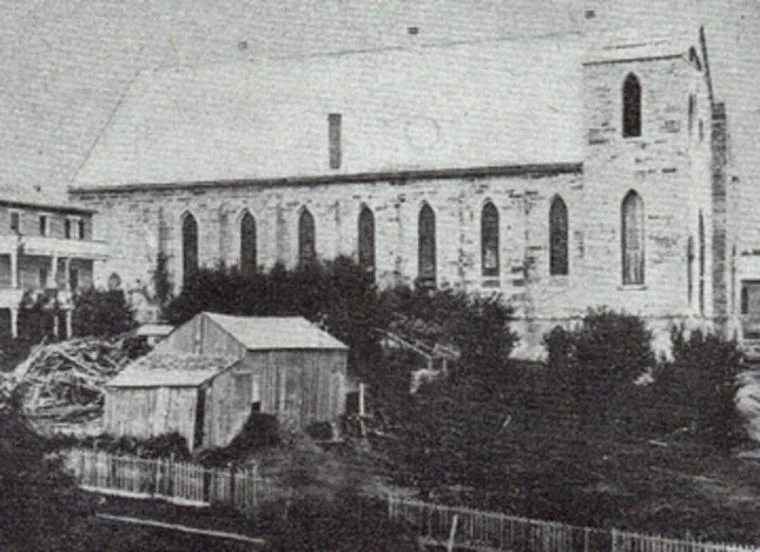
May 1, 1864
Bishop Clement Smyth traveled from Dubuque to set the first cornerstone of Saint Irenaeus. This was the fifth structure for the parish in twenty years. Parishioners contribute their labor, and the Niagara limestone (aka Blue Lime) was hewn and hauled from north of the city. At the time, “Pope Pius IX was head of the Church, Abraham Lincoln was President of the United States, and a civil war was raging.” From Journey: The Biography of a Pastorate by ME Eckelberg. (page 21)
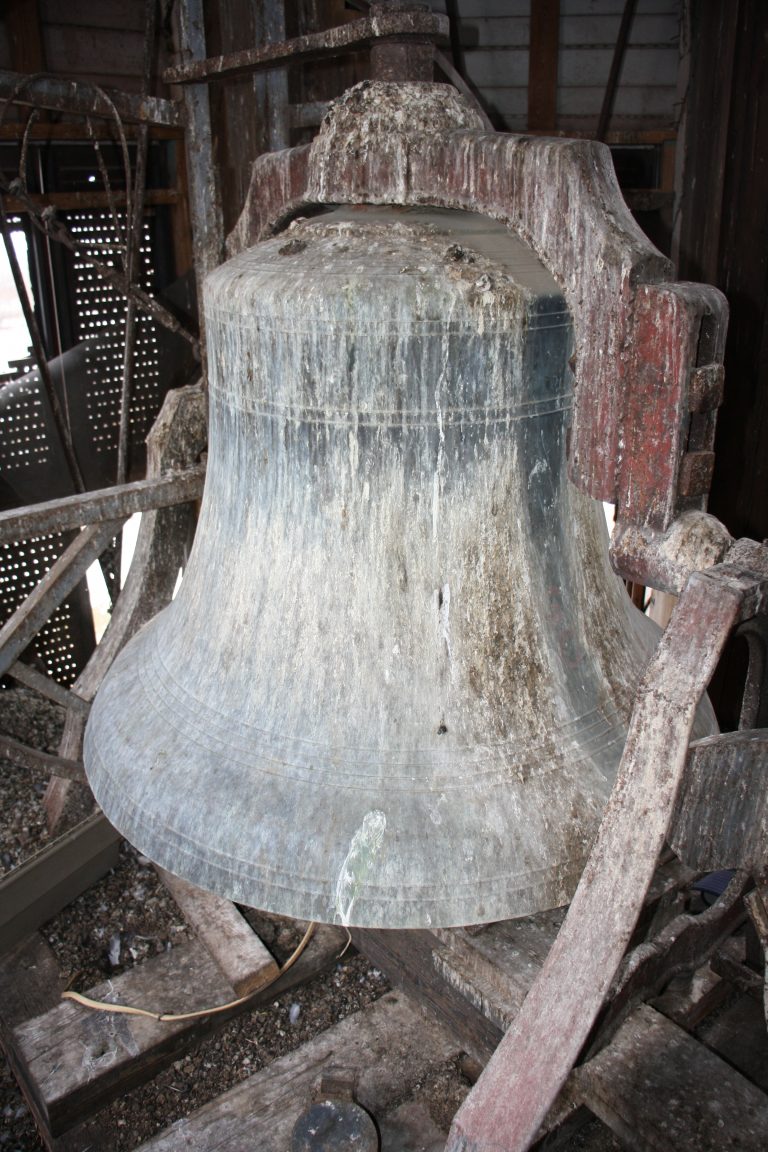
June 27, 1869
St. Irenaeus Church was dedicated the day before its feast day. This bell (current image) in the south steeple was due to arrive in time for the special day. The bell reads: Jones and Company Founders Troy, NY 1869
After Mass, Bishop Hennessy spoke: “God has accepted by our resolve to build a house in which to worship Him. God has smiled upon your efforts, and it is my privilege, standing between God and His people, to receive from your hands this house and present it, blessed and consecrated by His priests, to Him…” His Excellency went on about the bell, the font, the pulpit, and the confessional – “the mercy seat of God on earth – where the broken-hearted and the unfortunate will find relief.” (Ibid, page 35)
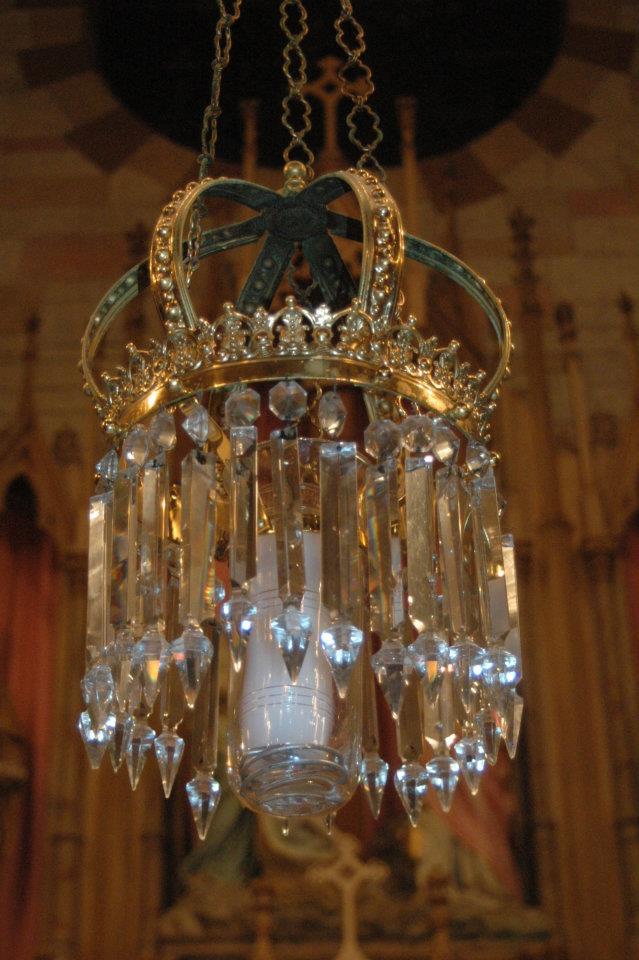
1870
St. Irenaeus was modeled after the Cathedral of St. Irenaeus, Lyon, France.
Father Jean brought this sanctuary lamp – a replica of the crown of Napoleon III and a gift of the Bonaparte family – back from a trip to France. It was transferred to Clinton’s new Prince of Peace parish after its closing in 2008.
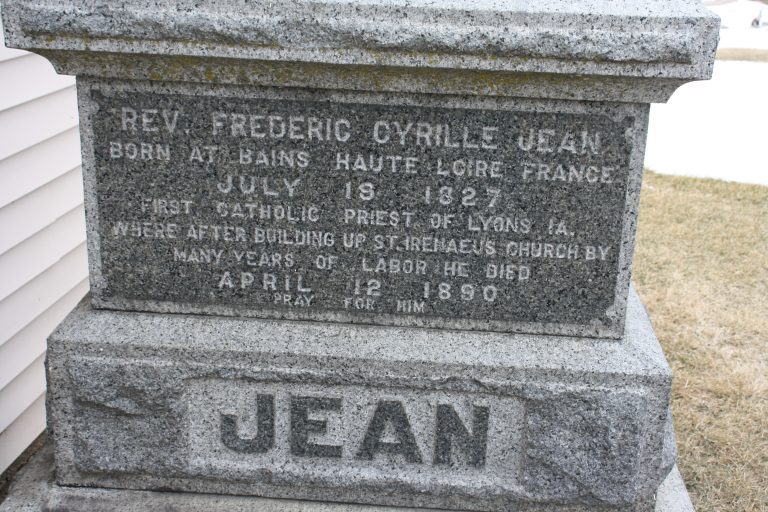
April 12, 1890
After twenty years living as a “canceled priest” under the shadow of the church he built, Father Jean died. The details surrounding his death were ambiguous and suspicious. His tombstone in St. Boniface Cemetery reads:
Rev. Frederic Cyrille Jean
Born at Bains, Haute Loire, France
July 19, 1827
First Catholic Priest of Lyons, Iowa
Where After Building Up St. Irenaeus Church
By Many Years of Labor He Died
April 12, 1890
PRAY FOR HIM
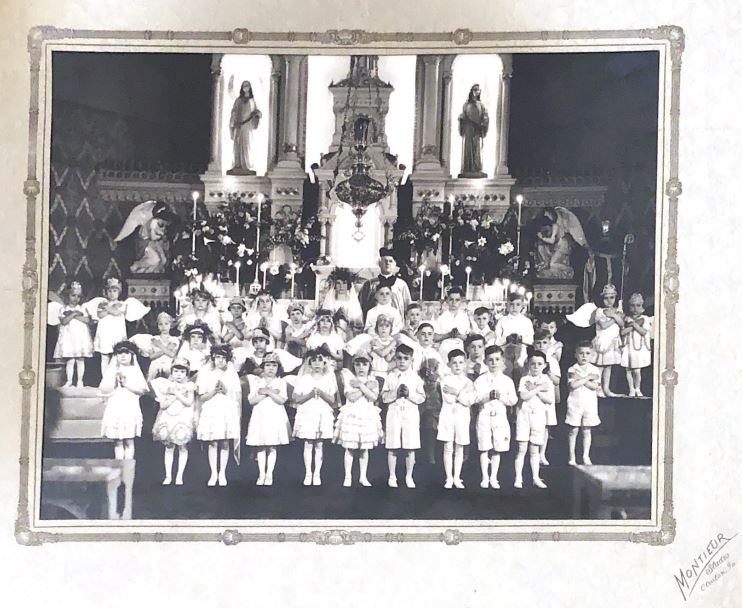
<1906
This is the only known image of the original altar at St. Irenaeus, prior to 1906. Notice the three Crucifixion scene windows (now in the choir loft) were the backlight for the High Altar. The sanctuary lamp was also much bigger than present day. It was written that this altar was made of stone.
This was recently shared from a family collection. If you have historic photos or stories to share about St. Irenaeus, please send them in to [email protected].
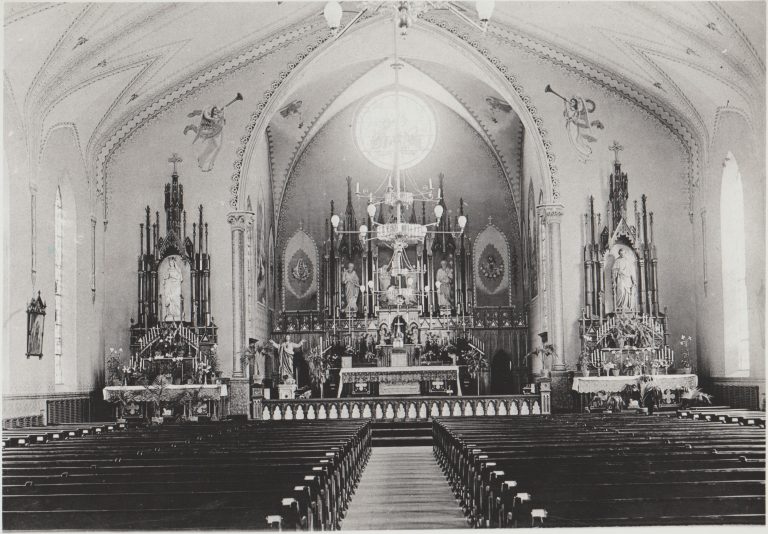
1907
The altar and entry of St. Irenaeus were reversed in 1907 under Rev. James Comerfield. Parishioners now enter off North 2nd Street at ground level. The main entry was previously at the top of wooden decking on the east side.

Mid-late 1900s
In 1948, the rickety upper turrets on the high altars were cut down under Monsignor Jackson. The simulated stone walls were used to fix the interior plaster walls that “wept” from dampness or age. (From Journey: The Biography of a Parish, by ME Eckelberg. page 91) The basement was expanded between 1968-1973, complete with a modern kitchen and multi-purpose hall

June 28, 2008
The five Catholic parishes of Clinton – St. Patrick’s, St. Mary’s, Sacred Heart, St. Boniface and St. Irenaeus – merged in 1990. In 2008, the five churches were closed and parishioners were moved to the new Jesus Christ Prince of Peace Church on the west end of town.
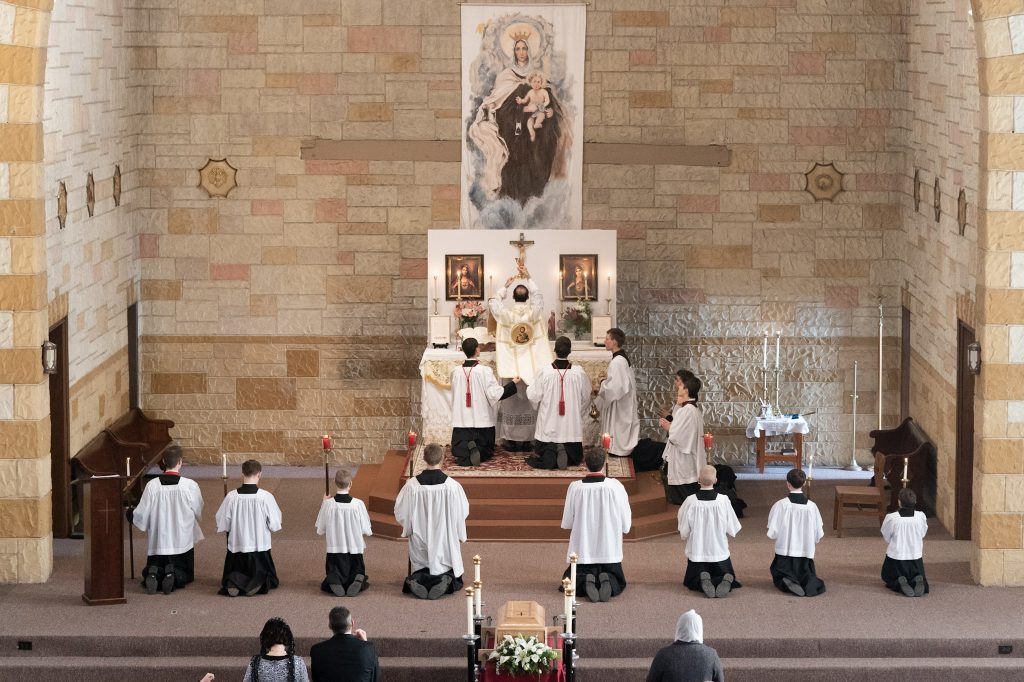
December 18, 2021
The Mass of the Angels was said for little Maximilian Gabbard, in whose memory this church is restored. This was the first Traditional Mass said many years.
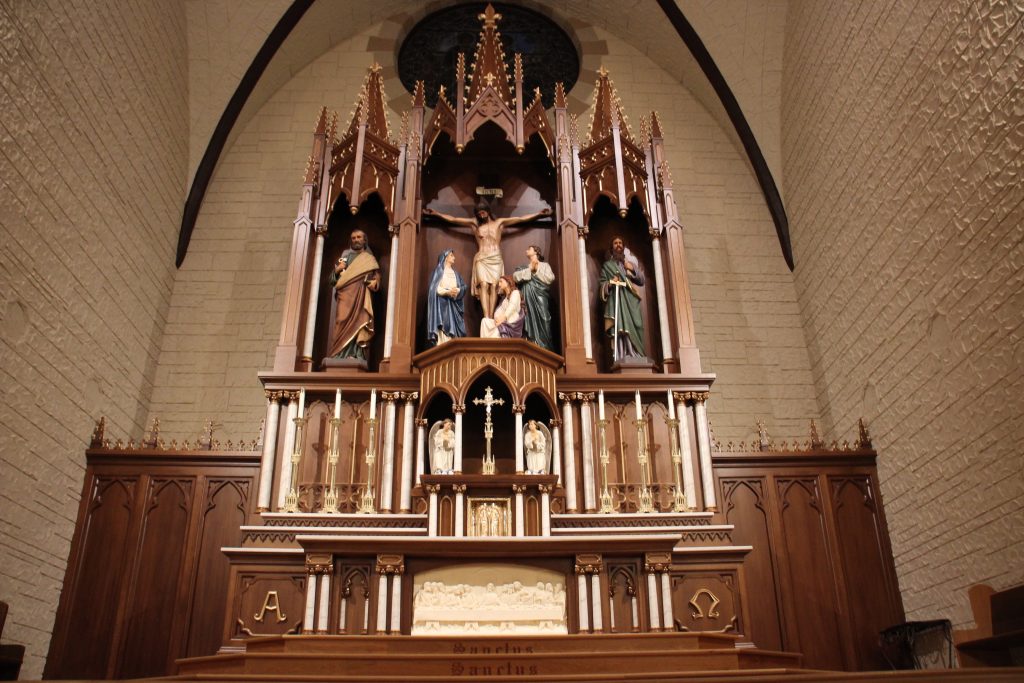
September 2023
The new High Altar installation was complete, including a new hardwood platform and the tabernacle – a ready-home for Our Lord.